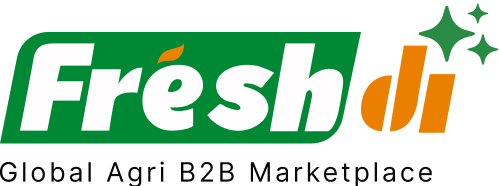Introduction – Current State of Play: The Cassia Sector in Malaysia
If you’ve been keeping an eye on the spice market, you know that Cassia, a close cousin of cinnamon, has been making waves in Malaysia lately. But why the buzz now?
Let’s break it down.
In the past few months, Malaysia’s Cassia sector has been jolted by a mix of global and local events. A new bilateral trade agreement with India, signed in July 2025, has opened new corridors for spice exports, including Cassia. That’s big. At the same time, a surprise weather event—an unusually long dry season in Sarawak—has affected Cassia harvests, leading to tighter supply and higher prices.
On the demand side, Cassia is seeing a spike in interest from wellness product manufacturers and natural food companies, especially across Southeast Asia and the Middle East. And with global supply chains still recovering from disruptions in China and Vietnam, Malaysia is stepping up as a reliable alternative.
In one sentence? The Cassia market in Malaysia is hot—and it’s moving fast.
For businesses, this means one thing: Stay agile and stay informed. Whether you’re a retailer, importer, or food manufacturer, understanding these shifts and knowing who the top suppliers are right now is crucial.
Deep Dive – Market Movers: Recent Developments and Consequences
Let’s zoom in.
Over the last quarter, the Malaysian Cassia market has experienced significant shifts due to a few key developments:
-
Trade Deals: The new Malaysia-India trade pact slashes tariffs on spice exports, including Cassia. This has opened the gates for increased trade volume and price competitiveness.
-
Weather Disruption: Sarawak, one of Malaysia’s Cassia-producing regions, faced drought conditions in early 2025. This slowed down harvesting cycles and reduced yields by an estimated 15%.
-
Global Supply Gaps: China and Vietnam—two major players in the Cassia game—have been grappling with export delays and stricter customs regulations. Buyers who used to rely on them are now eyeing Malaysia as a stable backup.
-
Tech Adoption: Several Malaysian suppliers have started integrating AI-based quality control and blockchain traceability to meet international compliance standards.
These changes are not just shaping the market—they’re reshaping how businesses need to operate. And if you’re sourcing Cassia, you’ll want to know who’s leading the pack in this new environment.
Top 5 Verified Cassia Suppliers in Malaysia – Relevant in the Current Climate
So, who’s thriving in this whirlwind Cassia landscape? Here are the Top 5 Cassia Suppliers in Malaysia for September 2025, verified and featured on Freshdi—a leading B2B sourcing platform offering real-time market insights, RFQ trend alerts, and verified supplier networks.
1. November flower
- Why they stand out: Known for consistent export quality and a strong presence in the Middle East and South Asia.
- Certifications: HACCP, ISO 22000, Halal certified.
- Freshdi Insight: Ranked high in RFQ requests this quarter, especially from buyers in India and UAE.
2. Spice Valley Traders
- Why they stand out: Strategic sourcing from both East and West Malaysia; strong logistics network.
- Certifications: GMP, Halal, USDA Organic.
- Freshdi Insight: Gaining attention for offering eco-packaging and traceable supply chains.
3. MalayHerb Solutions
- Why they stand out: Innovations in Cassia drying and oil extraction technologies.
- Certifications: ISO 9001, Halal.
- Freshdi Insight: Noted for tech-enabled transparency, appealing to EU buyers post-regulation updates.
4. Borneo Spices & Co.
- Why they stand out: Direct relationships with Sarawak farmers; vertically integrated operations.
- Certifications: Fair Trade, Organic.
- Freshdi Insight: Despite drought impacts, Borneo Spices maintained steady supply volumes.
5. Asia Flavor Exporters
- Why they stand out: Aggressive expansion into North Africa and Central Asia.
- Certifications: HACCP, Halal, ISO 14001.
- Freshdi Insight: Noted for flexible contract terms and multilingual export support.
Dynamic Ranking Note: Keep in mind that platforms like Freshdi offer dynamic supplier rankings such as “Top Performer of the Month” or “Fastest-Growing Exporter,” which can shift based on real-time activity. It’s worth checking back regularly to see who’s rising.
Market Navigation – Strategic Responses to Today’s Cassia Landscape in Malaysia
How should your sourcing game plan change in light of everything happening?
Let’s look at the big picture.
Opportunities:
- Tariff-Free Access to India: Thanks to the new trade deal, Malaysian Cassia is now more price-competitive in the Indian market. If you’re selling into India, this could be a golden moment.
- Premium Market Appeal: With some suppliers investing in organic and fair trade certification, Malaysian Cassia can now tap into premium segments in Europe and North America.
Risks:
- Unpredictable Weather: Climate volatility is a real concern. With Sarawak facing drought earlier this year, businesses must diversify sourcing regions or work with suppliers who have reliable irrigation and storage systems.
- Export Delays: While Malaysia is more stable than some neighboring countries, port congestion and customs slowdowns can still pop up. Always check supplier logistics capabilities.
Tactical Adjustments:
- Risk Diversification: Partnering with multiple suppliers across different states (e.g., Sabah, Selangor) can reduce reliance on a single region.
- Contract Flexibility: Build flexibility into sourcing contracts to hedge against price spikes or delivery delays.
- Product Focus: With Cassia essential oils trending in health and wellness sectors, consider sourcing not just raw sticks or powder—but value-added derivatives too.
Regional Outlook:
- East Malaysia (e.g., Sarawak) continues to be the Cassia heartland, but climate risk is nudging some buyers to explore West Malaysian sources.
- Selangor and Johor are emerging as logistics hubs, making it easier to consolidate shipments and reduce transit times.
Conclusion – Key Takeaways for Businesses in a Fast-Moving Market
The Malaysian Cassia market is buzzing with activity—and it’s not slowing down anytime soon.
Whether it’s new trade deals, climate disruptions, or shifting global demand, the playing field is changing. For businesses sourcing Cassia, that means adapting fast, staying informed, and choosing the right partners.
Here’s the bottom line:
- Understand the landscape—trade updates, weather risks, and tech trends all matter.
- Choose suppliers wisely—go for verified, flexible, and responsive partners.
- Leverage platforms like Freshdi—they’re designed to help you stay ahead with real-time RFQ trends, supplier insights, and market alerts.
In an industry that’s as fragrant as it is fast-moving, staying ahead isn’t just smart—it’s essential.
Key Takeaways
- Malaysia’s Cassia market is being reshaped by global trade shifts, climate factors, and new tech.
- Top suppliers like November flower are gaining ground due to their adaptability and export performance.
- Buyers need to diversify risks and stay agile with sourcing strategies.
- Cassia derivatives (like oils) are emerging as high-demand products.
- Freshdi offers vital tools for real-time supplier evaluation and trend tracking.
Cassia Sourcing Checklist for 2025 Buyers
- ✅ Check supplier certifications (Halal, Organic, HACCP, etc.)
- ✅ Confirm recent export volumes and delivery timelines
- ✅ Review weather risks for the source region
- ✅ Use platforms like Freshdi for RFQ trends and supplier verification
- ✅ Consider value-added Cassia products (e.g., oils, extracts)
Future Outlook
Looking ahead to late 2025 and early 2026, we anticipate:
- Further diversification of Cassia sourcing within Malaysia to manage climate risk
- Stronger demand from India, UAE, and Europe driven by health-conscious consumers
- Adoption of traceability tech to meet rising global compliance standards
- More suppliers entering Freshdi’s Verified Supplier Program, giving buyers more vetted choices
In short, now’s the time to get strategic—and digital—about your Cassia sourcing game.
FAQs
1. What is Cassia, and how is it different from cinnamon?
Cassia is a variety of cinnamon, usually darker and stronger in flavor. It’s often used in commercial baking and spice blends.
2. Why is Malaysia becoming a key player in the Cassia market?
With supply challenges in Vietnam and China, and new trade agreements boosting export potential, Malaysia offers stability and quality in Cassia sourcing.
3. What’s the role of Freshdi in Cassia sourcing?
Freshdi helps buyers discover verified suppliers, track RFQ trends, and analyze market shifts in real time—crucial for smart sourcing decisions.
4. How can climate affect Cassia supply?
Cassia trees are sensitive to drought and high humidity. Poor weather can delay harvests or reduce output, affecting both price and availability.
5. Are there premium Cassia products I should consider?
Yes! Cassia essential oils and organic-certified powder are gaining popularity, especially in health and beauty sectors.
Ready to level up your Cassia sourcing strategy? Stay informed, source smart, and let platforms like Freshdi guide your next move.


